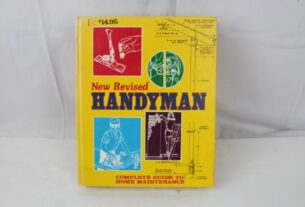If you’re into pottery, then you know how important it is to have the right tools at your disposal. One such tool that’s become an essential part of every potter’s toolkit is the ribbon tool. Specifically designed for ceramics, this versatile tool has a wide range of applications that make it indispensable in any pottery studio.
In this article, we’ll explore the different uses of ribbon tools in ceramics, their various types available in the market, and how you can choose the best one for your specific needs.
The Many Applications of Ribbon Tools in Ceramics
Ribbon tools are essentially thin metal strips with a loop or handle on one end. They come in different shapes, sizes, and thicknesses and are used for various tasks during the ceramic making process. Here are some of the most common applications of ribbon tools:
1. Trimming
Trimming is a process whereby excess clay is removed from the base of a pot to give it a clean finish. This is where ribbon tools come in handy as they allow you to cut through clay smoothly and accurately without damaging the pot’s walls.
2. Sculpting
Ribbon tools are also great for sculpting clay into intricate shapes and designs. Their thin metal blades allow you to carve out fine details with ease, giving your creations a unique and personalized touch.
3. Smoothing
After shaping and sculpting your clay piece, you need to smooth out any rough edges or imperfections on its surface. Ribbon tools can help here too by providing precise control over the smoothing process.
4. Incising
Incising is a technique where lines or patterns are etched onto a clay surface using a sharp instrument like a ribbon tool. This creates texture on the surface that can be accentuated with glazes later on.
Types of Ribbon Tools Available in the Market
Now that we know what ribbon tools are used for, let’s look at the different types available in the market:
1. Loop Tools
Loop tools have a looped end that’s perfect for trimming and sculpting clay. They come in various shapes and sizes, with some having flat edges while others have pointed tips for more intricate work.
2. Wire End Tools
Wire end tools have a thin metal wire on one end that’s great for cutting through clay with precision. They’re ideal for incising and detailing work where you need to create fine lines or patterns on the surface.
3. Needle Tools
Needle tools have a sharp pointed tip that’s perfect for piercing clay or creating small holes in it. They’re also great for incising and detailing work, especially when you need to create texture on the surface.
4. Ribbon Sculpting Tools
Ribbon sculpting tools are similar to loop tools but have a wider blade that makes them ideal for shaping larger pieces of clay. They’re also great for smoothing out surfaces and creating even curves.
Choosing the Best Ribbon Tool for Your Needs
When it comes to choosing the best ribbon tool for your specific needs, there are several factors to consider:
1. Size and Shape
The size and shape of the ribbon tool you choose will depend on the type of work you plan to do. If you’re working on small details, then a smaller tool like a needle tool or wire end tool would be ideal. For larger pieces, go for a loop tool or ribbon sculpting tool.
2. Material
Ribbon tools can be made from various materials like stainless steel, wood, or plastic. Stainless steel is the most durable and long-lasting option but can be more expensive than other materials.
3. Price
Price is always a factor when buying any tool, so make sure you choose one that fits your budget without compromising on quality.
In Conclusion
Ribbon tools are an essential part of any potter’s toolkit, and their versatility makes them ideal for a wide range of ceramic making applications. Whether you’re trimming, sculpting, smoothing, or incising clay, there’s a ribbon tool out there that can help you get the job done with ease.
So if you’re looking to up your pottery game, consider investing in a quality ribbon tool today. With the right tool in your hand, you’ll be able to create beautiful and unique pieces of art that will stand the test of time.
Wiki Reference
For more information on ceramics and pottery making techniques, visit https://en.wikipedia.org/wiki/Ceramic_art. You can also find useful resources and tutorials on websites like https://www.ceramicsmonthly.org/ and https://ceramicartsnetwork.org/.




